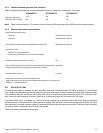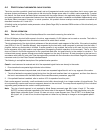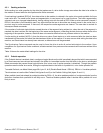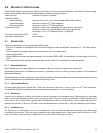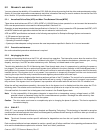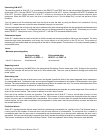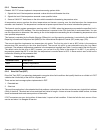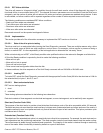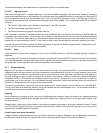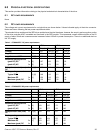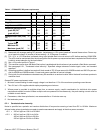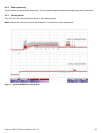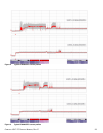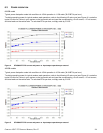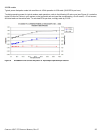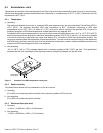CHEETAH 15K.7 FC PRODUCT MANUAL, REV. E 19
The anticipated length of the Extended test is reported through the Control Mode page.
5.2.6.2.4 Log page entries
When the drive begins DST, it creates a new entry in the Self-test Results Log page. The new entry is created by inserting a
new self-test parameter block at the beginning of the self-test results log parameter section of the log page. Existing data will
be moved to make room for the new parameter block. The drive reports 20 parameter blocks in the log page. If there are
more than 20 parameter blocks, the least recent parameter block will be deleted. The new parameter block will be initialized
as follows:
1. The Function Code field is set to the same value as sent in the DST command
2. The Self-Test Results Value field is set to Fh
3. The drive will store the log page to non-volatile memory
After a self-test is complete or has been aborted, the drive updates the Self-Test Results Value field in its Self-Test Results
Log page in non-volatile memory. The host may use Log Sense to read the results from up to the last 20 self-tests performed
by the drive. The self-test results value is a 4-bit field that reports the results of the test. If the field is set to zero, the drive
passed with no errors detected by the DST. If the field is not set to zero, the test failed for the reason reported in the field.
The drive will report the failure condition and LBA (if applicable) in the Self-test Results Log parameter. The Sense key, ASC,
ASCQ, and FRU are used to report the failure condition.
5.2.6.2.5 Abort
There are several ways to abort a diagnostic. You can use a SCSI Bus Reset or a Bus Device Reset message to abort the
diagnostic.
You can abort a DST executing in background mode by using the abort code in the DST Function Code field. This will cause
a 01 (self-test aborted by the application client) code to appear in the self-test results values log. All other abort mechanisms
will be reported as a 02 (self-test routine was interrupted by a reset condition).
5.2.7 Product warranty
Beginning on the date of shipment to the customer and continuing for the period specified in your purchase contract,
Seagate warrants that each product (including components and subassemblies) that fails to function properly under normal
use due to defect in materials or workmanship or due to nonconformance to the applicable specifications will be repaired or
replaced, at Seagate’s option and at no charge to the customer, if returned by customer at customer’s expense to Seagate’s
designated facility in accordance with Seagate’s warranty procedure. Seagate will pay for transporting the repair or
replacement item to the customer. For more detailed warranty information, refer to the standard terms and conditions of
purchase for Seagate products on your purchase documentation.
The remaining warranty for a particular drive can be determined by calling Seagate Customer Service at 1-800-468-3472.
You can also determine remaining warranty using the Seagate web site (www.seagate.com). The drive serial number is
required to determine remaining warranty information.
Shipping
When transporting or shipping a drive, use only a Seagate-approved container. Keep your original box. Seagate approved
containers are easily identified by the Seagate Approved Package label. Shipping a drive in a non-approved container voids
the drive warranty.
Seagate repair centers may refuse receipt of components improperly packaged or obviously damaged in transit. Contact
your authorized Seagate distributor to purchase additional boxes. Seagate recommends shipping by an air-ride carrier
experienced in handling computer equipment.
Product repair and return information
Seagate customer service centers are the only facilities authorized to service Seagate drives. Seagate does not sanction
any third-party repair facilities. Any unauthorized repair or tampering with the factory seal voids the warranty.



